
|
Pumpkin Math ActivitiesEach of these activities capitalize on students' love of pumpkins. Fall is the season that students begin the search for their own "perfect pumpkin" so these activities were created to help students develop mathematical concepts using a pumpkin theme. |

|
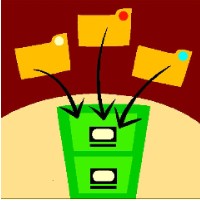
|
Math Activity Themes: Pumpkins |
Pumpkin Math MatThis seasonal mat uses two different size pumpkins to model addition problems. Students roll a die and place that many pumpkin seeds on the first pumpkin. They roll the die again and place that many pumpkin seeds on the second pumpkin. Next, students write the number sentence that tells how many seeds there are altogether on both pumpkins. Students may use actual dried pumpkin seeds for a seasonal flair. As an alternative, students may draw seeds (spots) on each pumpkin to picture the roll of the die. Place the pumpkin mat in a sheet protector and use dry erase markers for a reusable classroom activity. Place the materials in a math center for additional student practice. Download the |
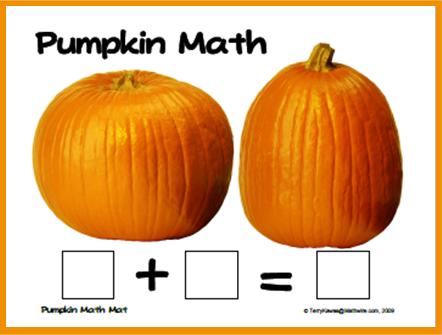
|

|
Pumpkin MeasurementTeachers find many ways to incorporate measurement in annual pumpkin activities. Here are some suggestions:
|
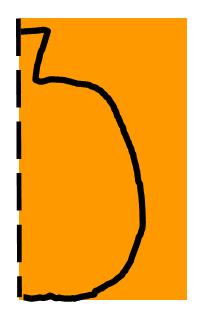
|
Pumpkin SymmetryThe following activities develop the concept of symmetry:
|
Pumpkin Glyphs & Graphing IdeasPumpkin Glyphs
|
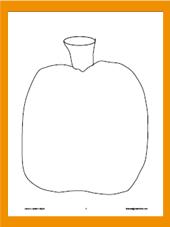
|
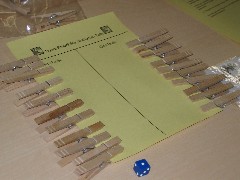
|
Pumpkin GraphingThis month's featured graphing format is the clothespin graph which captures data from simple yes-no questions. Use a piece of oaktag or foam board to construct the actual graph part that is reused. Write the question on a sheet of paper and attach it to the top of the board. Provide clothespins for students to use to affix to the yes or no side of the graph. Some teachers write student names on the clothespins so that it is easy to see who did or didn't vote yet.
|
Pumpkin Coordinate GraphingThis activity require students to use coordinate pairs to correctly color in the squares of the grid to reveal a Jack-o-Lantern. Students learn to identify ordered pairs using letters and numbers to define a space. It is critical that students learn that the horizontal name precedes the vertical name in ordered pairs. This makes it easier for students to expand this skill to coordinate pairs that name the intersection of two lines. Download the |
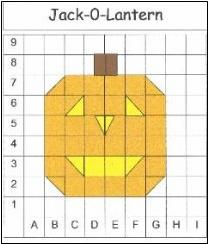
|
Math-Literature Connections: Pumpkins


|
The Biggest Pumpkin Ever by Steven Kroll is a great introduction to the How Many Seeds in a Pumpkin? by Margaret McNamara develops both math and science concepts using the seeds in a pumpkin. Students practice counting seeds by 2s, 5s, 10s and learn that the more lines a pumpkin has, the more seeds it will have inside. |


|
Ten Pumpkins up on TopCreate the fall sequel booklet, Ten Pumpkins Up on Top, in which students balance pumpkins on their heads. The pdf file contains a cover and a sample student page that may be copied so that students can draw pictures of themselves in costume, balancing 10 pumpkins. Or, create a class counting booklet with each student balancing increasing numbers of pumpkins, as assigned. Download the |
Pumpkin GamesPumpkin Jumble Game Data Collection & Analysis: This simple game provides a great opportunity for data collection and analysis of the probability of a one-die toss.
|

|
Pumpkin Farm GameThis game was designed to provide practice in reading coordinate pairs. First students arrange 12 pumpkins on their own Pumpkin Farm mat, making sure their opponent cannot see where they have placed the pumpkins. It is easy to stand up folders to block each student's view of the other pumpkin farm during the whole game. Once the pumpkins have been planted, the first student calls out the coordinates for an ordered pair (i.e. A3 or D6). If the other player has a pumpkin on that space, Player 1 captures the pumpkin and the points. Play continues in this Battleship-type game until one player finds all of the pumpkins or time runs out. Students use a recording sheet to mark their guesses and whether or not they have captured a pumpkin. Download he  Pumpkin Farm Game. The pdf file includes the Pumpkin Farm game mat, pumpkin pieces, directions and a recording sheet. The directions also provide different options for ending the game. Pumpkin Farm Game. The pdf file includes the Pumpkin Farm game mat, pumpkin pieces, directions and a recording sheet. The directions also provide different options for ending the game.
|
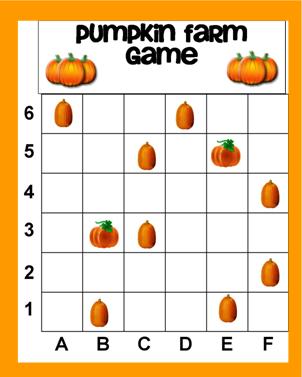
|
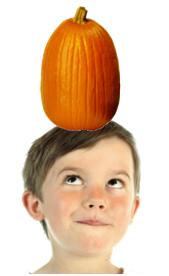
|
Pumpkin Problem Solving
|
Pumpkin Links
|
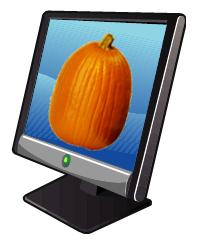
|


